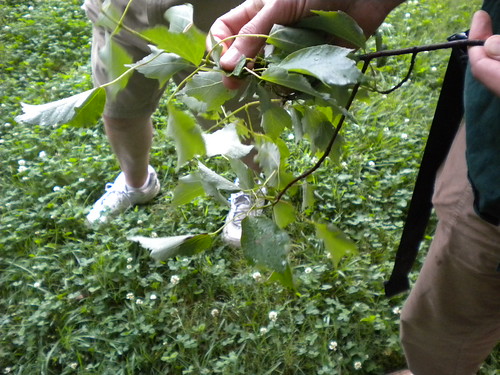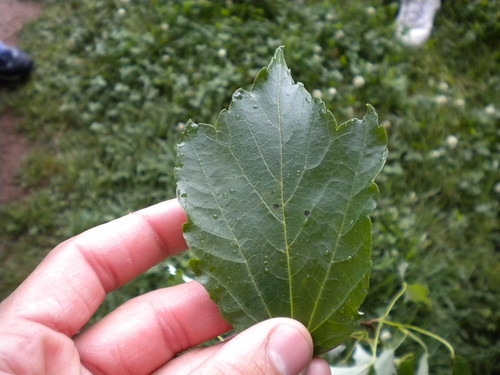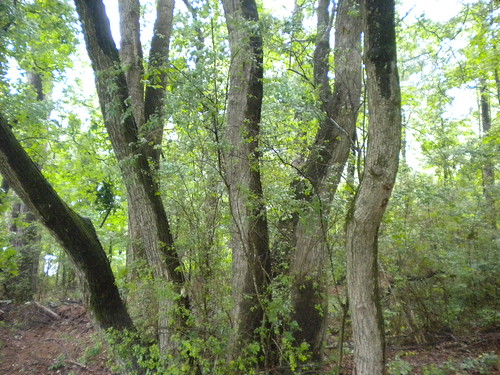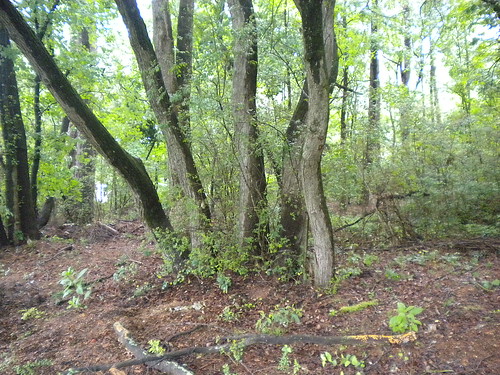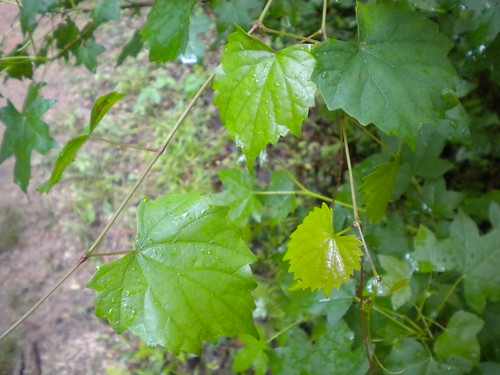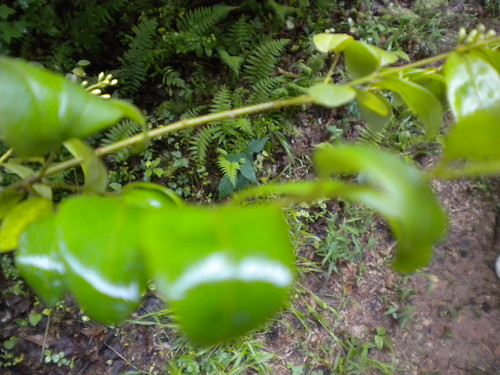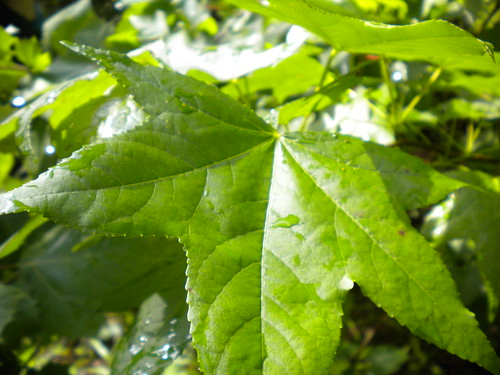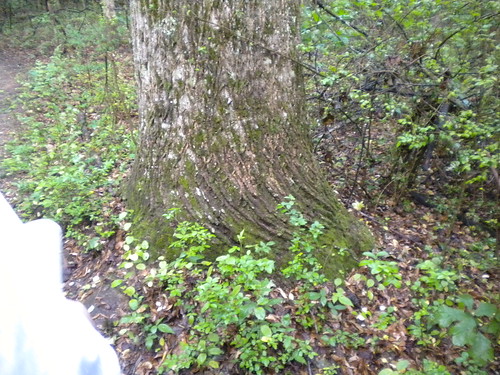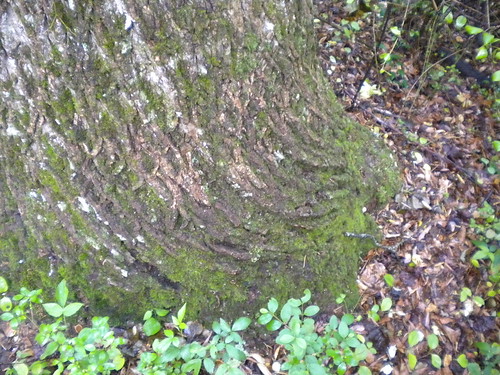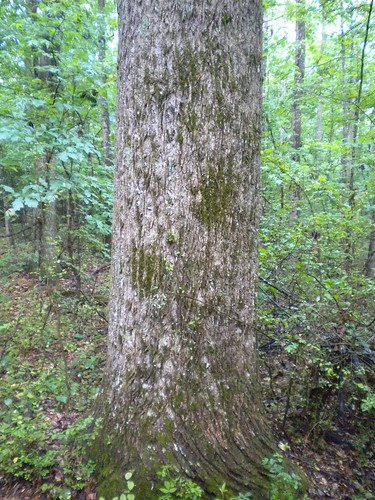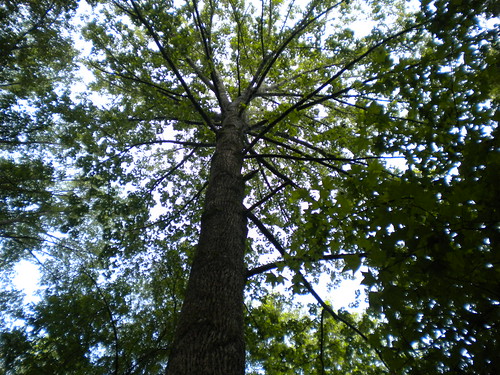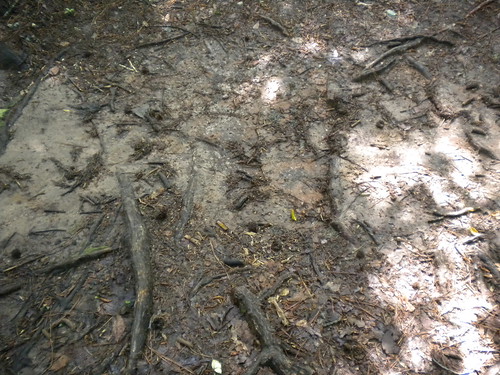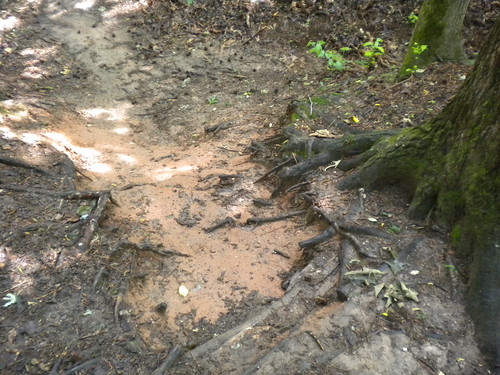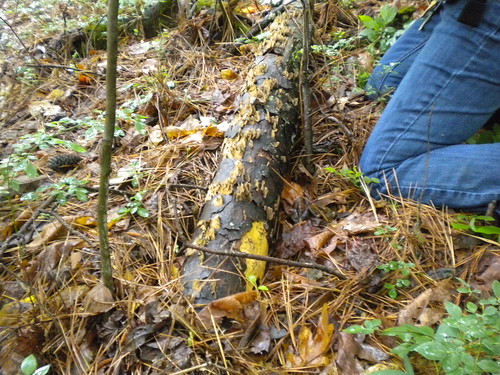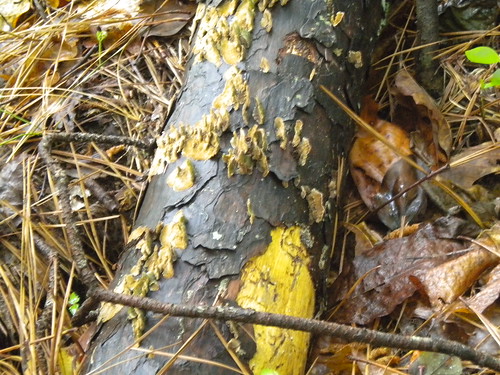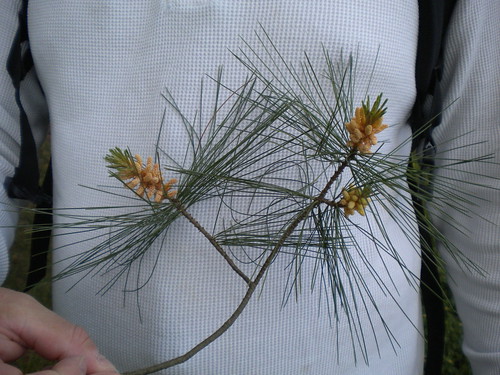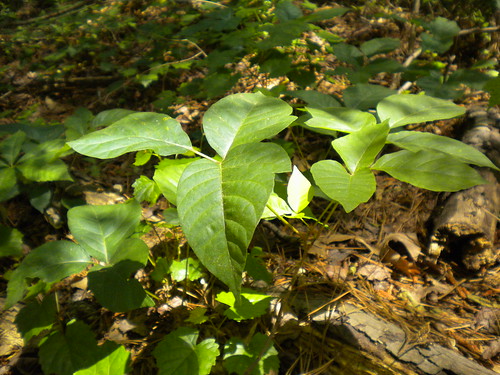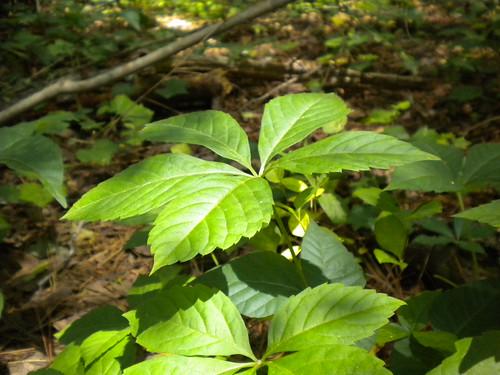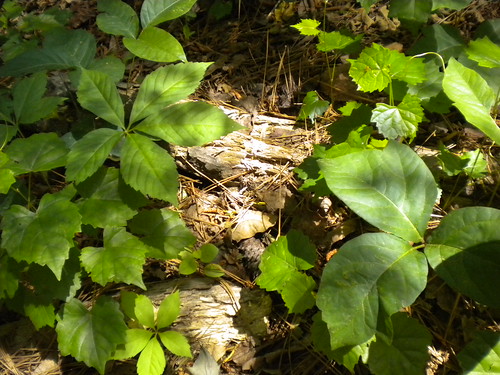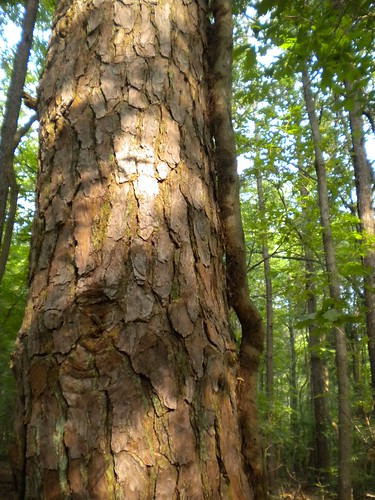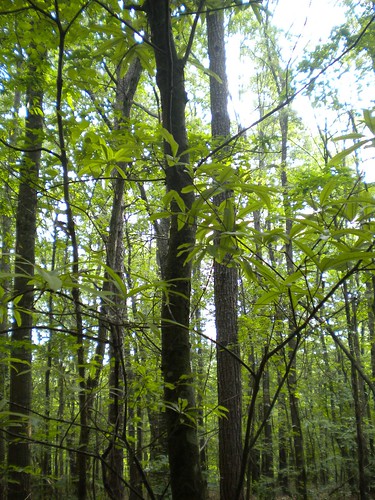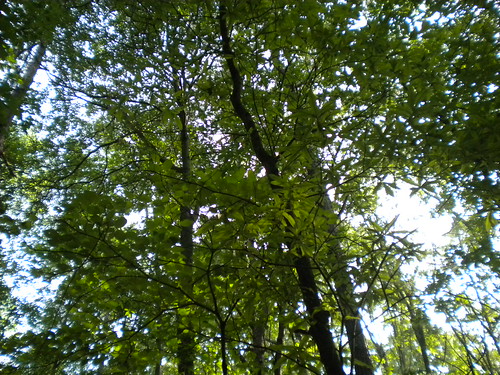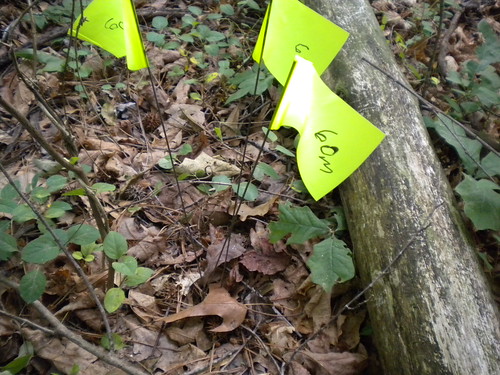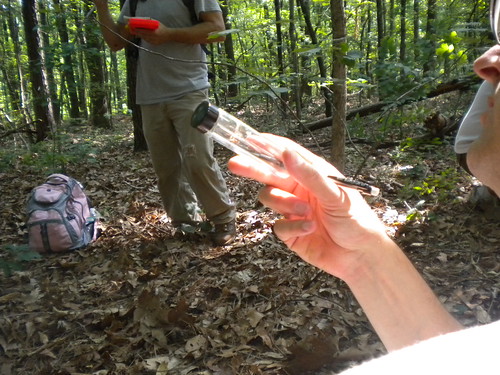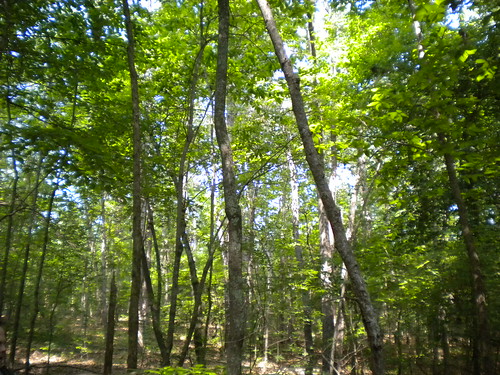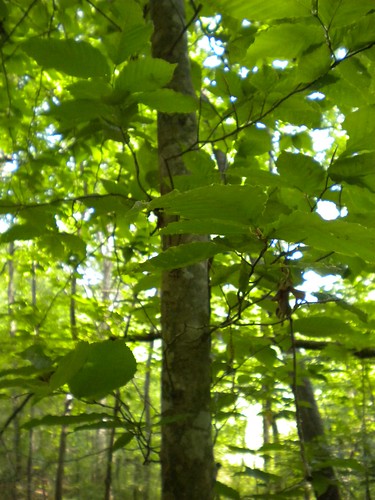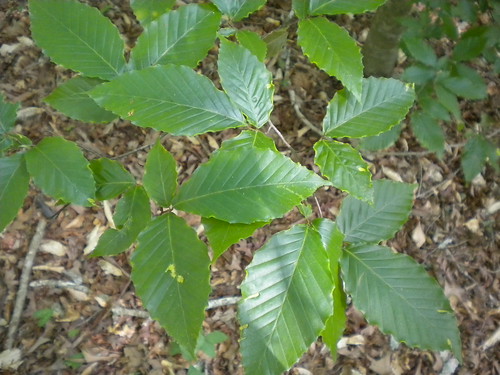Field Ecology: Day Two
05/17/2010
66 degrees Fahrenheit
Overnight rain, overcast
First, we saw a Red Maple (Acer rubrum) near the entrance to the South Trail. It has red twigs and stems, with whitish undersides and with red leaves in the fall. It competes parallel with American Sweetgum (Liquidambar styraciflua)and Water Oak (Quercus nigra). It is nartive to the area and spreads remarkably fast. It also has some fire-resistant properties and can survive in a number of environments. It thrives under canopy.
We saw an orb-weaver spider, 'a Charlotte's Web spider', (family: Araneidae), which forms a distinctive spiraled, circular web. This was a great opportunity for the group to try out the marco-settings on our cameras. While we fumbled around with the settings, the spider caught a moth and attempted to feed, but the moth escaped and flew away.
We took a few minutes to listen for bird calls. You never really hear them until you stop and listen. The large variety of sounds and meolodies is remarkable. Hoekstra picked out a specific bird, the Rufous Sided Towhee (Pipilo erythrophthalmus), from it's cry (get your tea! get your tea!) and located it on a branch, high above us, several meters away.
Continuing off of the South-Trail, we stumbled across some tulip poplars (Liriodendron tulipifera), loosely related to magnolias (Order: Magnoliales). It is a hardwood tree with generally straight trunks. Historically, they were a commonc source for lumber, especially for ship masts. They thrive in moist environments.

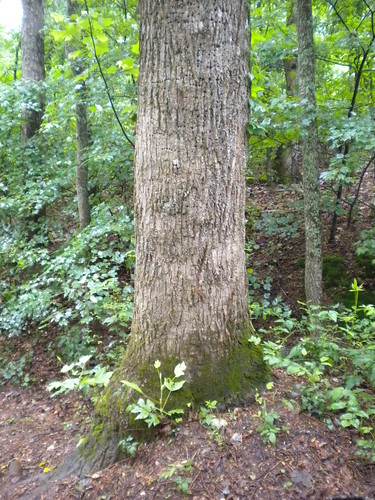


We passed some trees and saw that they were absolutely riddled with smooth, deliberate holes. These holes were made by theYellow-bellied sapsuckers (Sphyrapicus varius), who drill into trees and eat the sap and also feed on the insects that feed on the sap. They are very selective, in regards to the trees that they frequent, which I believe has something to do with the characteristics of the bark, or perhaps the sap found within and the insects that feed there. These holes cause trees to become more vulnerable to fungal infections.
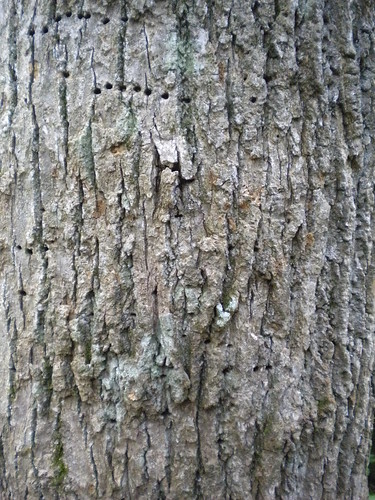

We noted some Muscodines (Vitis rotundifolia), which are very common in this region. Once you see one, they really are eveyrwhere. Here, they don't produce that many grapes, but do with increased sunlight availability. They often go years without producing fruit.
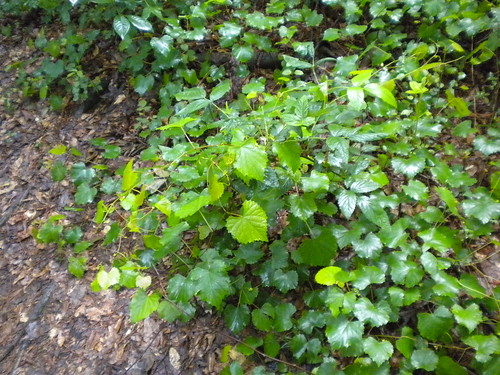
We saw (and heard) a Yellow-eyed vireo (Vireo flavifrons).They eat caterpillars, small bugs, etc and prefer shrubbery, like privet, for instance and stay close to the ground. To illustrate the importance of these types of birds to the forest ecosystem, researchers have placed heavy mesh on branches, preventing said birds from perching. The amount of damage (from insects, etc) to plants and shrubs in the area is an indicator of their vital role.
The 60m area was littered with dead pines, possibly due to pine beetles. It was a relatively young forest.
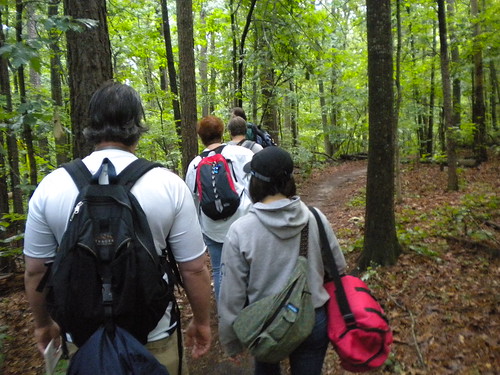

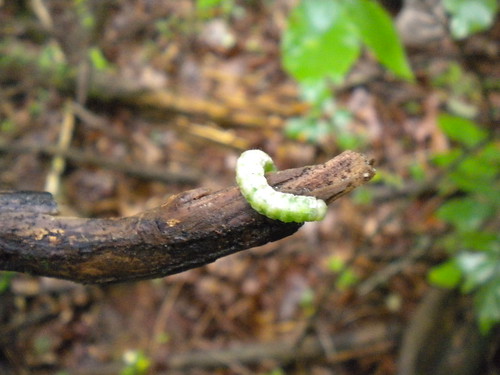
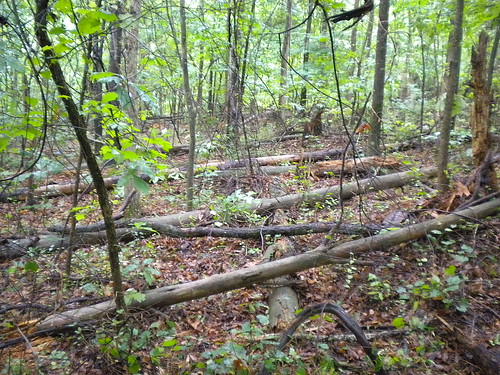
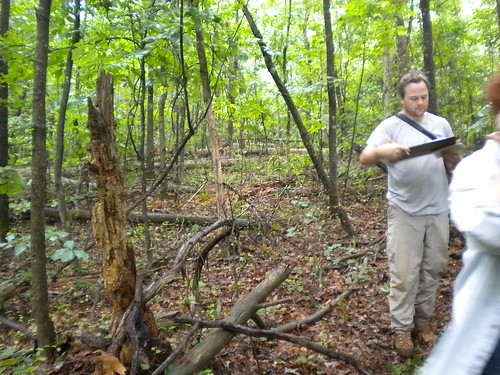
We encountered some Sassafras (Sassafras albidum), which gives off a wonderful smell when crushed. The stems also have a very distinct lemony taste when chewed. The taste is much stronger in the younger leaves. The root bark can be used for tea, as well.
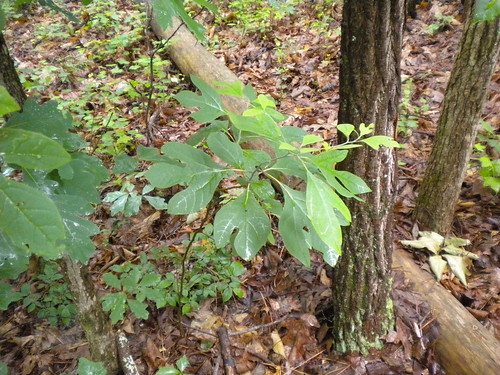
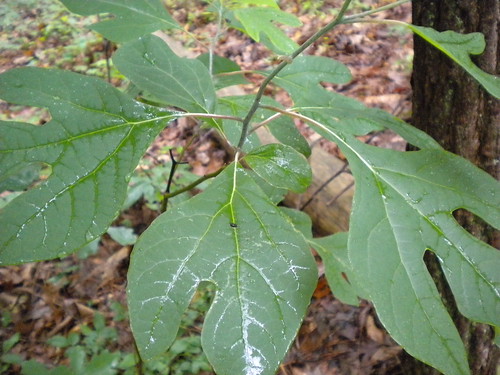
We saw some deer mushroom (Pluteus cervinus), which is also know as fawn mushroom. It is an attractive mushroom for flies to lay eggs onto, with plenty of food source for the newly hatched maggots to work their way through. The subtrate, a rotting trunk, is fairly common for decomposers.

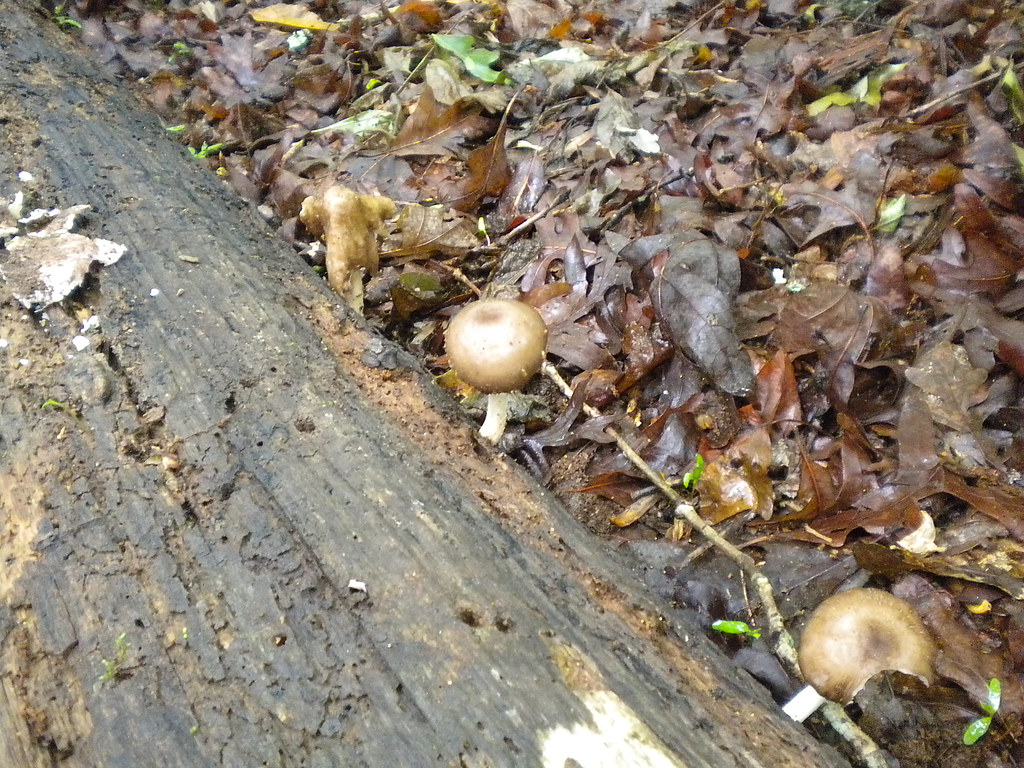
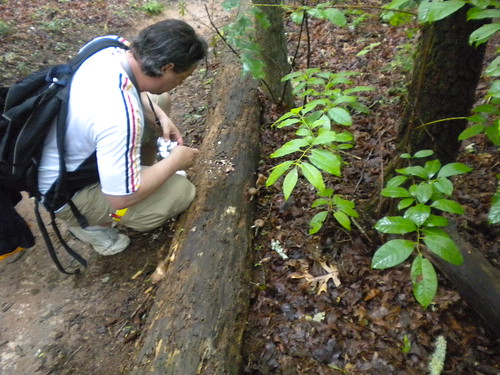
Reaching the access road, we discussed the roadside ecology and the types of plants that thrive in those disturbed areas.
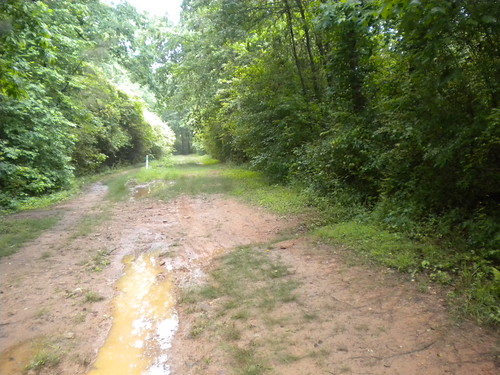
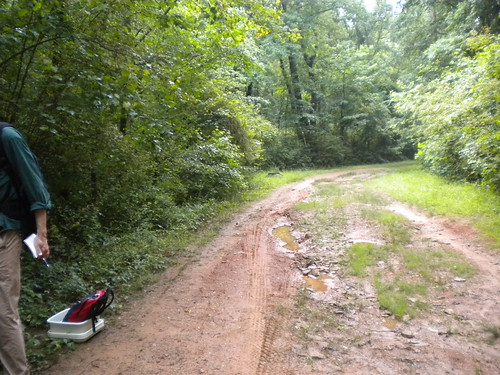
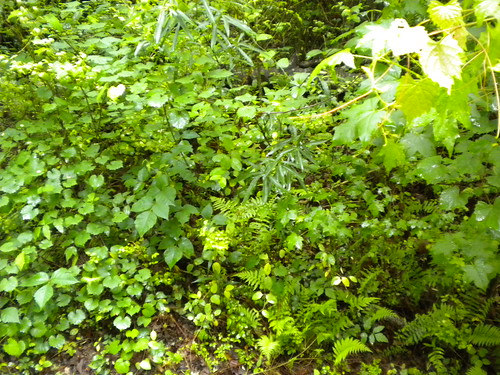
We discussed the Sycamore and it's distinctive and rather-large leaves.
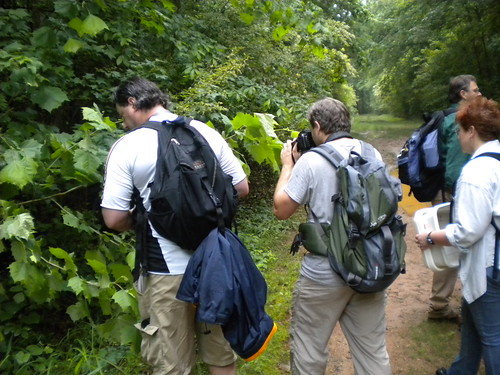
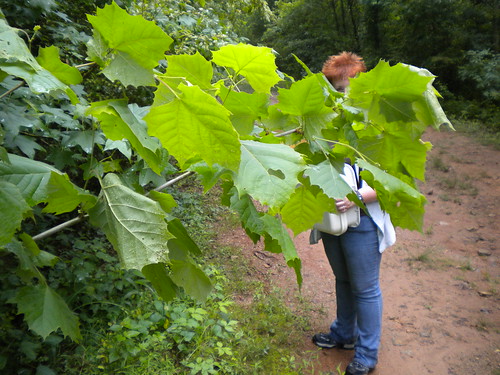
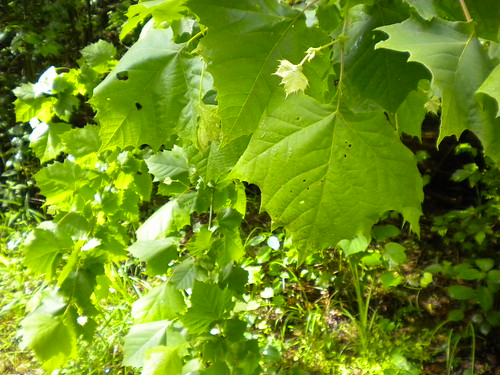
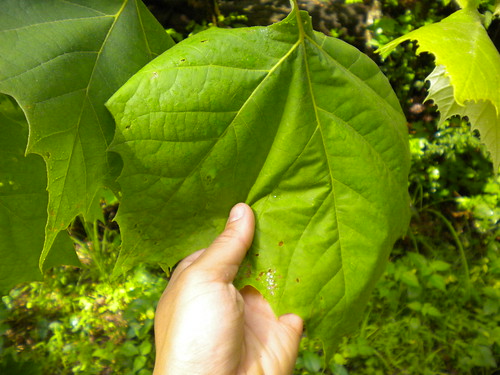
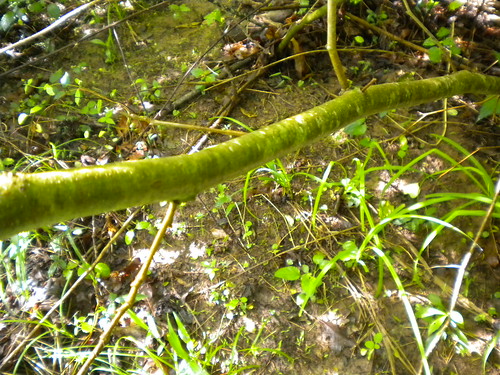
Unidentified mushroom. It is vase-shaped with a light fuzz and has gills centered on the underside.
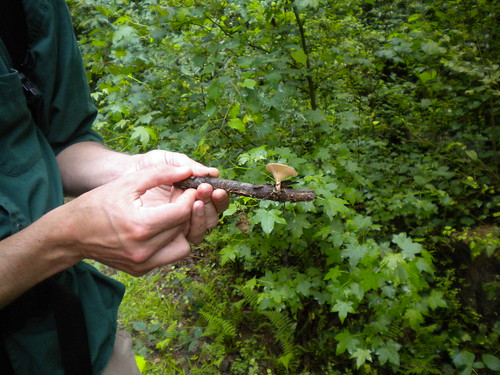

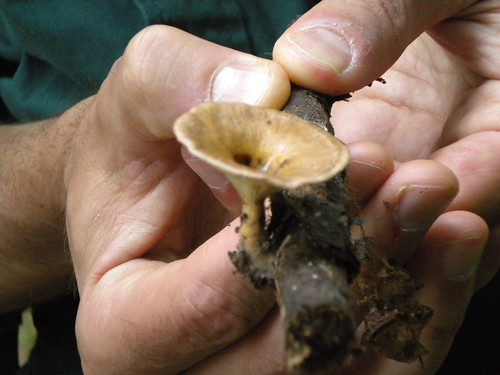
We encountered some Catbrier (Smilax rotundifolia) along the roadside. Birds particularly enjoy the black fruit and the roots of older plants can be made into pipes. The vine creeps everywhere and is heavily thorned. The leaves are round and heart-shaped.
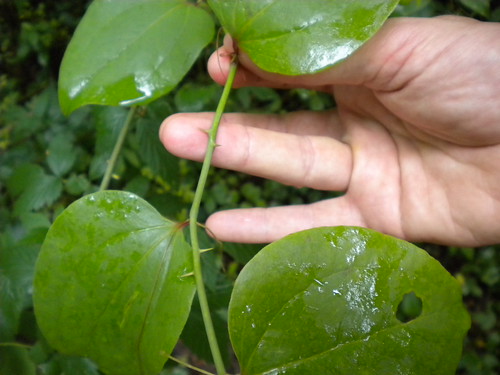

Gettin excited looking for Red Maple.
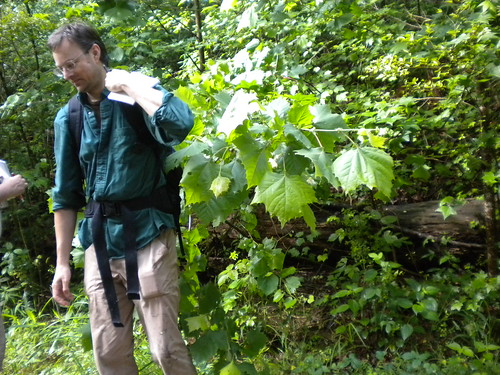
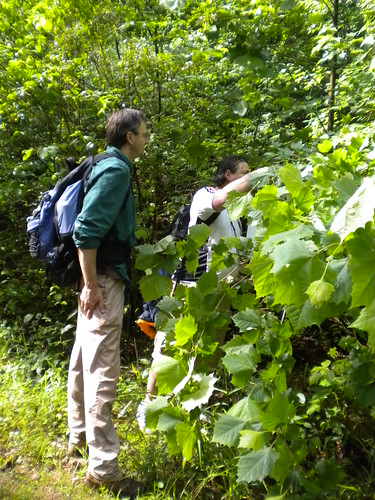
Detail of immediate area and trail.
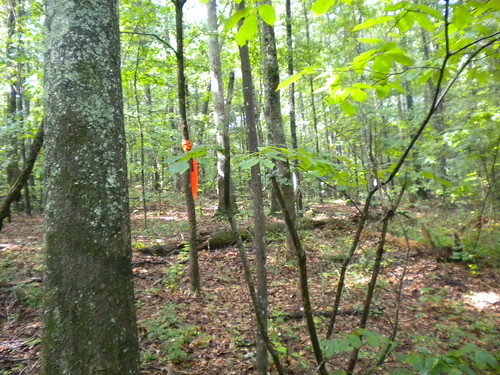

Defoliators, inchworm (?), geomitradae


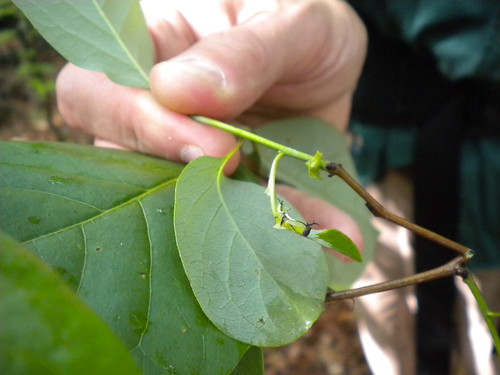
Blueberry, shrubbery
Many species, understory, grow in shitty soil (acid, sandy)
after fire or whatever it was that opened canopy
plants fruit, but can go years without fruiting.
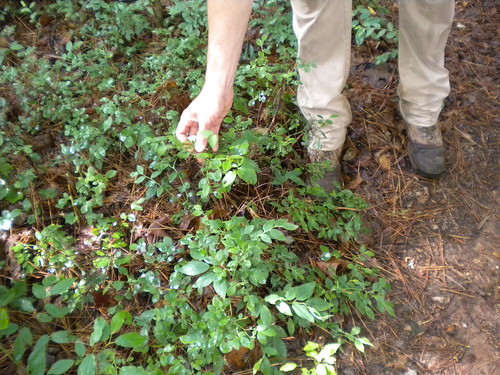
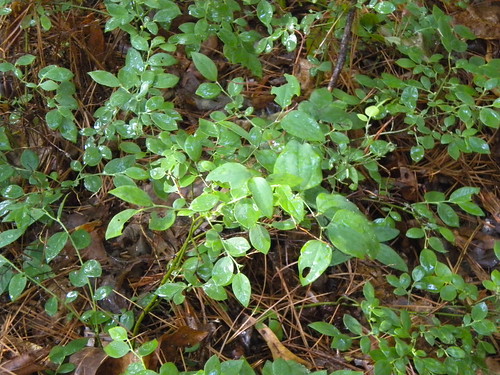
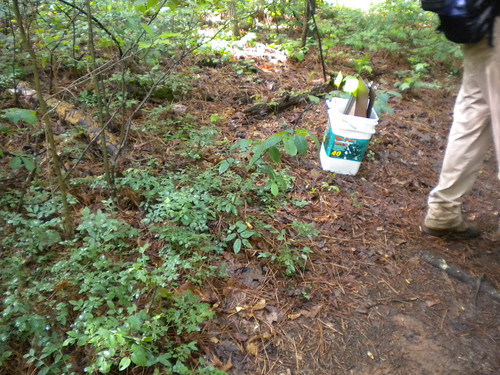
Exiting the trail
[362-377]

